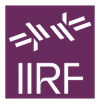That which is noteworthy and that which is astonishing in The Global Charter of Conscience
Abstract
The manner in which the new Global Charter of Conscience was presented por- trayed the power of a renewed paradigm for the ethics of public life.2 Viewed glo- bally, it was remarkable that representatives of the United Nations, the European Union, and the European Evangelical Alliance not only sat together peacefully at one table, but also spoke with a completely unified voice on matters of religion and conscience (June 21, 2012, at the European Parliament in Brussels). They describe the Charter, with the subtitle “A Global Covenant Concerning Faiths and Freedom of Conscience,” as a supplement and support for Article 18 of the UN Universal Declaration of Human Rights (1948). The new text is no doubt one of the most profound short explanations of freedom of religion and belief in human history; it also clarifies the way in which freedom of conscience is indivisible from all fundamental human rights. This is truly noteworthy. What is astonishing is that this document was presented by a distinctly Christian organization which is much concerned with missions and church planting, along with representatives of two of the world’s most prominent secular organizations, namely the United Nations and the European Union. What is the renewed paradigm behind this event?
Downloads
Published
Versions
- 2022-11-02 (2)
- 2022-11-02 (1)
Issue
Section
License
Copyright (c) 2012 Creative Commons Attribution 4.0 International (CC BY 4.0)

This work is licensed under a Creative Commons Attribution 4.0 International License.
Creative Commons Attribution 4.0 International (CC BY 4.0)





 The International Journal for Religious Freedom (IJRF) is an international peer-reviewed journal published by
The International Journal for Religious Freedom (IJRF) is an international peer-reviewed journal published by 